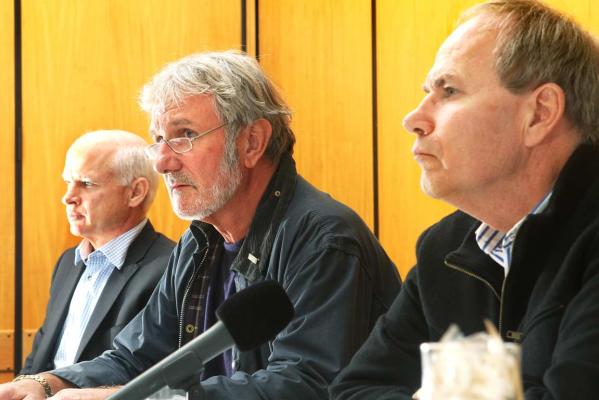
The type of gas and its origin are unknown.
Gas levels were still at an explosive level late last night following the early morning tragedy in Onehunga.
A police spokeswoman said emergency services were continuously pumping air into the tunnel but the site was too dangerous to enter for closer inspection.
The spokeswoman said the type of gas remained unidentified and no one knew how it had come to be in the pipe. "It is a mystery to everybody," she said.
Fire Service staff would remain at the scene until it was safe, and nearby residents were able to stay in their homes because the gas is not toxic.
The Mt Smart Rd site is part of the Hunua 4 watermain that will eventually run for 28km from Manukau to Auckland's CBD.
The $245 million project is aimed at catering for population growth and Watercare Services, an Auckland Council company, had engaged HEB Construction to carry out the work.
The Hunua 4 pipes are between 1.3m and 1.9m in diameter and the steel is 12mm thick. Most are being laid using an open trench system but tunnelling is employed for areas such as busy intersections.
The HEB workers were yesterday at the intersection of Mt Smart Rd, Victoria St and Athens Rd, installing apipe linking the new Hunua 4 pipe to the existing Hunua 3 watermain.
The Mt Smart Rd section of the project started in January, and yesterday's "critical cross connection work" was deliberately scheduled for Queen's Birthday Weekend when traffic flows and water demand would be lower.
At 7.15am a section of Hunua 3 was removed in preparation for the new connection. Watercare Services says that a short time later a small inspection team trained to operate in confined spaces entered the tunnel.
They were only a few metres along when the explosion occurred. Two of them were blown outside by the force of the blast.
Shortly after the blast, firefighters using gas detection equipment found gas levels in the tunnel were at dangerous levels.
Auckland fire acting area commander Steve Lakin said seven specialist appliances were sent to the scene.
Lakin said they do not know what gases were in the tunnel or what had ignited them but did say the limits were "beyond our normal safe procedures".
"All we can do at the moment is go through a process of elimination to make sure that the services in and around the area, such as electricity and gas, have been isolated and we are then working with the technicians on site from the relevant companies to determine what the gases are," he said.
The Fire Service planned to flood the pipe with material to reduce the risk of another explosion but first needed to establish what the gas was.
Five Labour Department inspectors were at the site yesterday. A spokesman said that once the site was stable the department would begin an investigation. It could not make any further comment until the investigation was complete.



what the gas is, but it's safe and you don't have to evcuate?